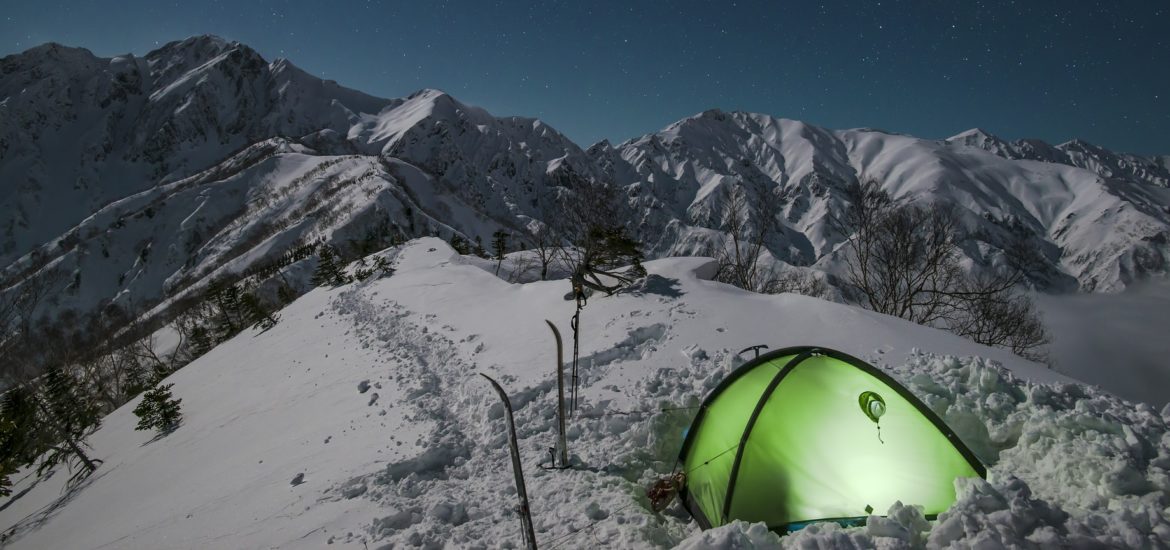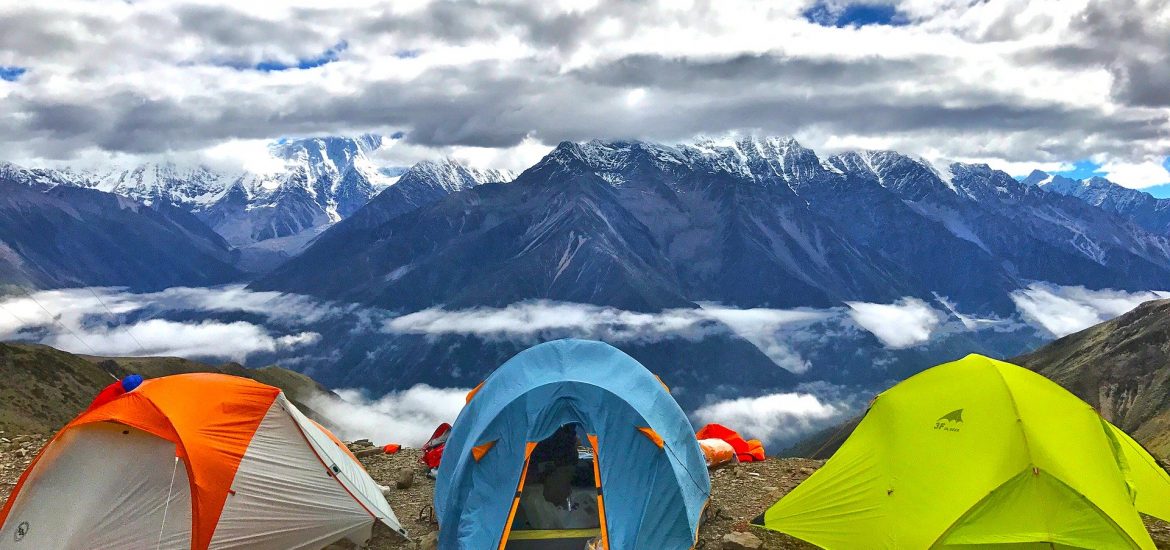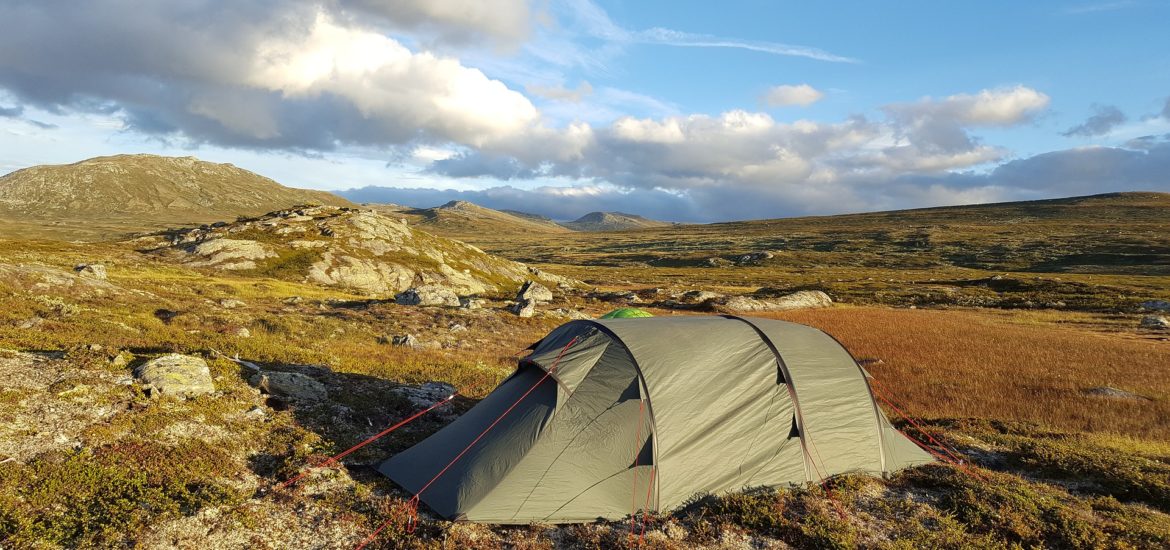The right tent makes all the difference when you head out into the backcountry. It can mean sleeping a full night and waking up the next day fully refreshed, or it can mean waking up every thirty minutes due to cold, wind, or water.
When you start researching, you’ll start to find two main tent constructions: a single-wall tent and a double-wall tent. It’s easy to question why there would be one or two walls in a small sleeping tent, but there’s a lot that goes into the technology and construction of these tents. From lightweight backpacking to durable car camping, there are reasons for it all.
Here, we’ll explain what both a single-wall tent and a double-wall tent are, why they’re different, and which one is better for what situation.
Soon, you’ll be able to get out, stop reading internet posts, and finally, be comfortably sleeping in the most beautiful spot you can find.
Article Contents:

What is a Single-Wall Tent?
A single-wall tent is exactly what it sounds like: a tent with a single wall built into its construction. Think of this as an easy-to-set-up, pop-up tent. There’s no additional assembly required, meaning you don’t need to add a rain fly to make the tent waterproof.
Traditionally, single-wall tents were made for mountaineering expeditions where you would be in a drier environment that was incredibly cold.
Today, companies are making single-wall tents that are designed to be a bit more breathable for ultralight backpackers around the world. A couple of examples include the MSR Advanced Pro 2-Person Ultralight, 4-Season Tent, and the Big Agnes Shield 3-Person, 4 Season Tent.
What are the Benefits of a Single-Wall Tent?
Typical Ultralight Tent Design
Due to the fewer materials, a single-wall tent is perfect for ultralight fans. These tents weigh significantly less than their counterparts.
Single-wall tents don’t require as many stakes (if any), there’s no need for an additional piece of material to keep the rain off, and you even lose weight from having fewer tent guy lines.
More Freestanding
A freestanding design means it can be easily set up anywhere. There’s no need to find soil that stakes can sink into and hold easily.
The single-wall tent supports itself, so you don’t need to guy out the lines and re-tension all of the lines when it starts raining.
Compact Pack Size
The simplicity of a single-wall tent makes it much more compact for long trips.
- When you don’t have the extra space in your backpack, a single-wall tent might be a great choice in order to save on space.
The only drawback here is that a smaller tent size means less storage for your gear.
If you’re in a torrential downpour, you’ll find yourself cuddling up closely with the boots you’ve been hiking in all day (and little ventilation to let those puppies breathe).
Quick Set Up Time
Since there’s less going on with a single-wall tent, it takes a short amount of time to get it up and ready to use. This is ideal for those setting up tents in difficult terrains and conditions, like a mountainous blizzard.
Double-wall tents have many more parts that require holding a rainfly still in the wind as you battle the main body of the tent.

What is a Double-Wall Tent?
Double-wall tents are much more traditional and will likely be what you picture when you think about a tent.
Double-wall tents are made out of two main parts, the inner body of the tent that is typically made of mesh to increase ventilation, and a waterproof rainfly.
- When it’s not raining, you can take off the rainfly and enjoy the night sky, and throw it back on for the cloudy nights.
The two walls combine to do what the single-wall tent tries to do on its own. With two different materials, the tent can be more enjoyable on a hot night as you can breathe a bit easier.
A couple examples of double-wall tents include The North Face Kaiju 4-Person, 3 season tent, and the Marmot Halo 4-Person, 3 season tent.
What are the Benefits of a Double-Wall Tent?
Dry Tent with Dry Gear
Because of the increased breathability, there is significantly less moisture build-up inside a double-wall tent than inside a single-wall.
- All of the moisture will escape the first mesh wall and then collect and drain off the rainfly.
With a double-wall tent, you’re much less likely to wake up covered in the water that came from your heavy snoring and breathing overnight.
The double-wall tent also allows for a larger amount of storage space for your gear.
- The rainfly often is designed with a tent vestibule – a space in between the two walls of the tent.
Here, you can store your pack overnight and your boots so they don’t get in your way as you sleep, but will stay dry. Plus, you won’t have to smell your own feet (as much) all night long!
Less Likely to Sag
Have you ever woken up in a tent with the whole ceiling of the tent touching your face? It’s not nice, and I don’t recommend it.
A double-wall tent that has the rainfly staked out properly (and then re-tensioned when it starts to rain or get wet) is less likely to sag down.
The catch here is that you do need to tighten the guy lines once the rainfly gets wet as the fabrics they are made out of tend to sag a bit once wet.
Pro-tip: If you’re looking for a solid 3-season tent recommendation, check out my article [Top 3] Camping Tents Perfectly Engineered for Heavy Rain and High Winds.

Are Single-Wall or Double-Wall Tents Warmer?
Single-wall tents were designed for extreme cold. The lack of a breathable layer means that all of the warmth your body produces is efficiently trapped inside the tent. This makes single-wall tents much warmer than double-wall tents.
Which Tent is Better for Winter Camping?
This one is unclear. Single-wall tents are indeed warmer, but that doesn’t necessarily make them better for all winter camping scenarios.
Camping in the snow is a tricky game – you need to stay dry and warm.
- If you’re in a dry environment with extreme cold, a single-wall will be better.
- If the snow is wet and it’s warmer out, double-wall tents may be best to keep you dry overnight.

Which Tent is Better for Camping?
For a typical camping trip, double-wall tents are the best option. Most camping trips are done in the summer, where it may be wet, but won’t be crazy cold. Double-wall tents keep you dry and comfortable.
There are a lot of different styles of camping going on out there, and a lot of different gear that’s advertised to be the best for those styles. To make it simple, I’ll break it down quickly and efficiently.
Car Camping
Bring a double-wall tent along with you. There’s no need to save on space and you are going to find yourself being much more comfortable with the additional room and comfort.
If you’re car camping in the winter, it’s more likely that you’ll sleep in the car anyway (and that’s kind of like a big single-wall tent).
Backpacking
In general, you’ll be doing most of your backpacking in the spring, summer, and fall. This means you want ventilation as your primary concern.
If you don’t mind carrying a bit more weight, a double-wall tent will easily be the best option for you.
Ultralight Backpacking
This can go either way. There are great double-wall tents that are designed to be ultralight, but you can’t beat the single-wall version in order to cut down on weight as much as possible.
Mountaineering
As I said, single-wall tents were made for this. They’re lightweight, warmer, and so much easier to set up when you’re facing down a wicked windstorm at 14,000 feet.
There’s no doubt about this, take a single-wall tent if you want the best possible, and easiest, protection in the high alpine environments.
Pro-tip: As an alternative to single-wall tents in challenging environments, you might want consider bivouacking.

This article contains affiliate links, which help support this blog at no cost to you!
